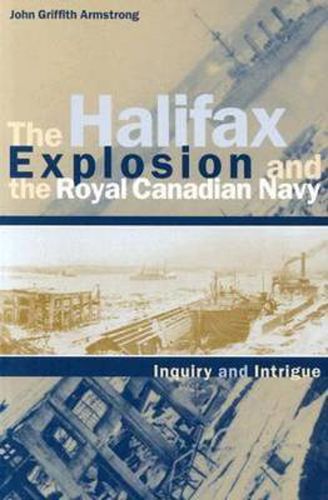Readings Newsletter
Become a Readings Member to make your shopping experience even easier.
Sign in or sign up for free!
You’re not far away from qualifying for FREE standard shipping within Australia
You’ve qualified for FREE standard shipping within Australia
The cart is loading…






The Halifax Explosion of 1917 is a defining event in the Canadian consciousness; this title offers a sustained analytical history of the disaster, using the large federal government archives that contain first-hand accounts and the response of the national authorities. Canada’s recently established navy was at the epicentre of the crisis. Armstrong reveals the navy’s compelling and little-known story by carefully retracing the events preceding the disaster and the role of the military in its aftermath. He catches the pulse of disaster response in official Ottawa and provides an analysis of the legal manoeuvres, rhetoric, blunders, public controversy and crisis management that ensued. His disturbing conclusion is that federal officials knew of potential dangers in the harbour before the explosion, took no corrective action and kept the information from the public. As a result, a Halifax naval officer was made a scapegoat and the navy received lasting, and mostly undeserved, vilification. This investigation should be of interest to military and naval devotees, and for anyone who wishes to understand one of the events that shaped Canada in the 20th century.
$9.00 standard shipping within Australia
FREE standard shipping within Australia for orders over $100.00
Express & International shipping calculated at checkout
The Halifax Explosion of 1917 is a defining event in the Canadian consciousness; this title offers a sustained analytical history of the disaster, using the large federal government archives that contain first-hand accounts and the response of the national authorities. Canada’s recently established navy was at the epicentre of the crisis. Armstrong reveals the navy’s compelling and little-known story by carefully retracing the events preceding the disaster and the role of the military in its aftermath. He catches the pulse of disaster response in official Ottawa and provides an analysis of the legal manoeuvres, rhetoric, blunders, public controversy and crisis management that ensued. His disturbing conclusion is that federal officials knew of potential dangers in the harbour before the explosion, took no corrective action and kept the information from the public. As a result, a Halifax naval officer was made a scapegoat and the navy received lasting, and mostly undeserved, vilification. This investigation should be of interest to military and naval devotees, and for anyone who wishes to understand one of the events that shaped Canada in the 20th century.